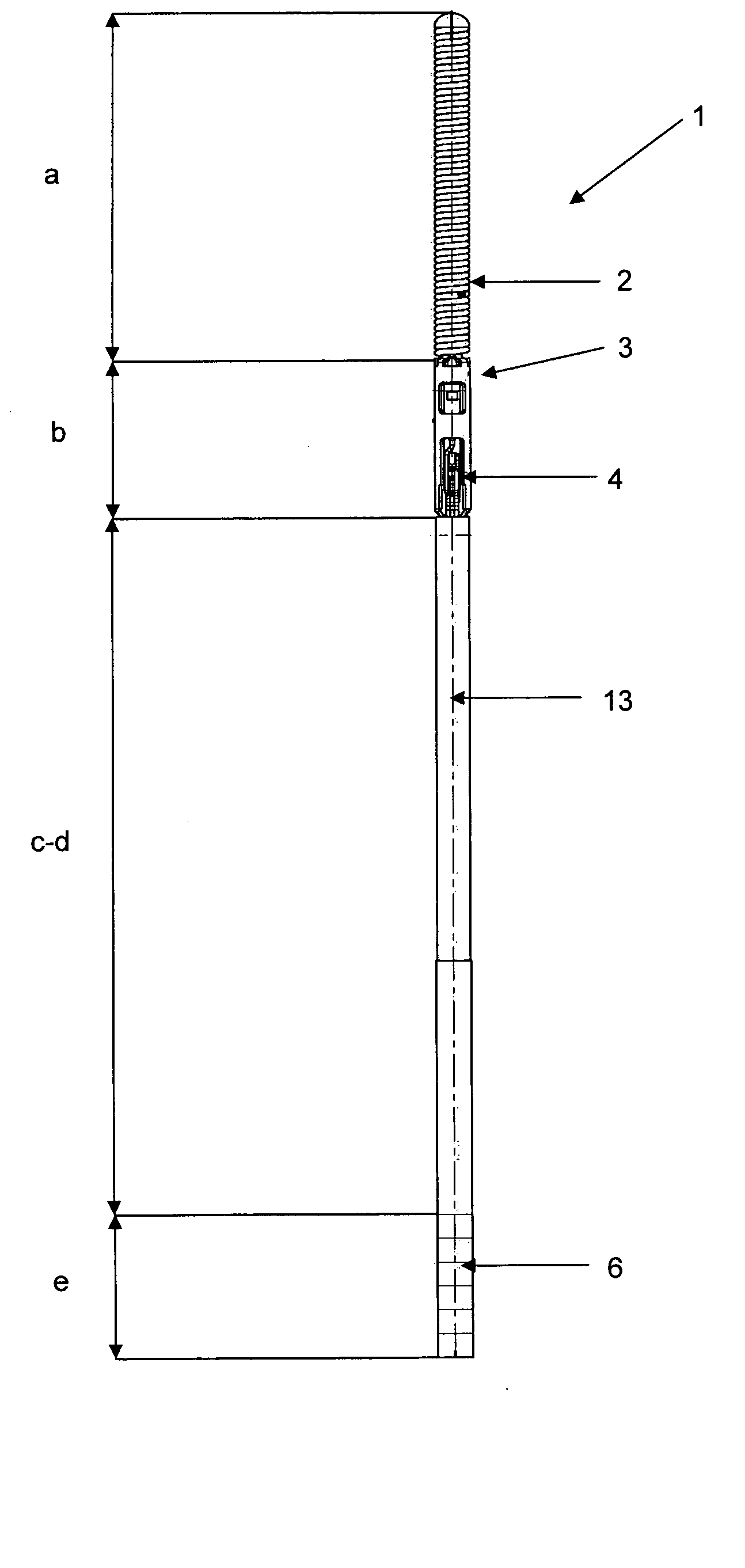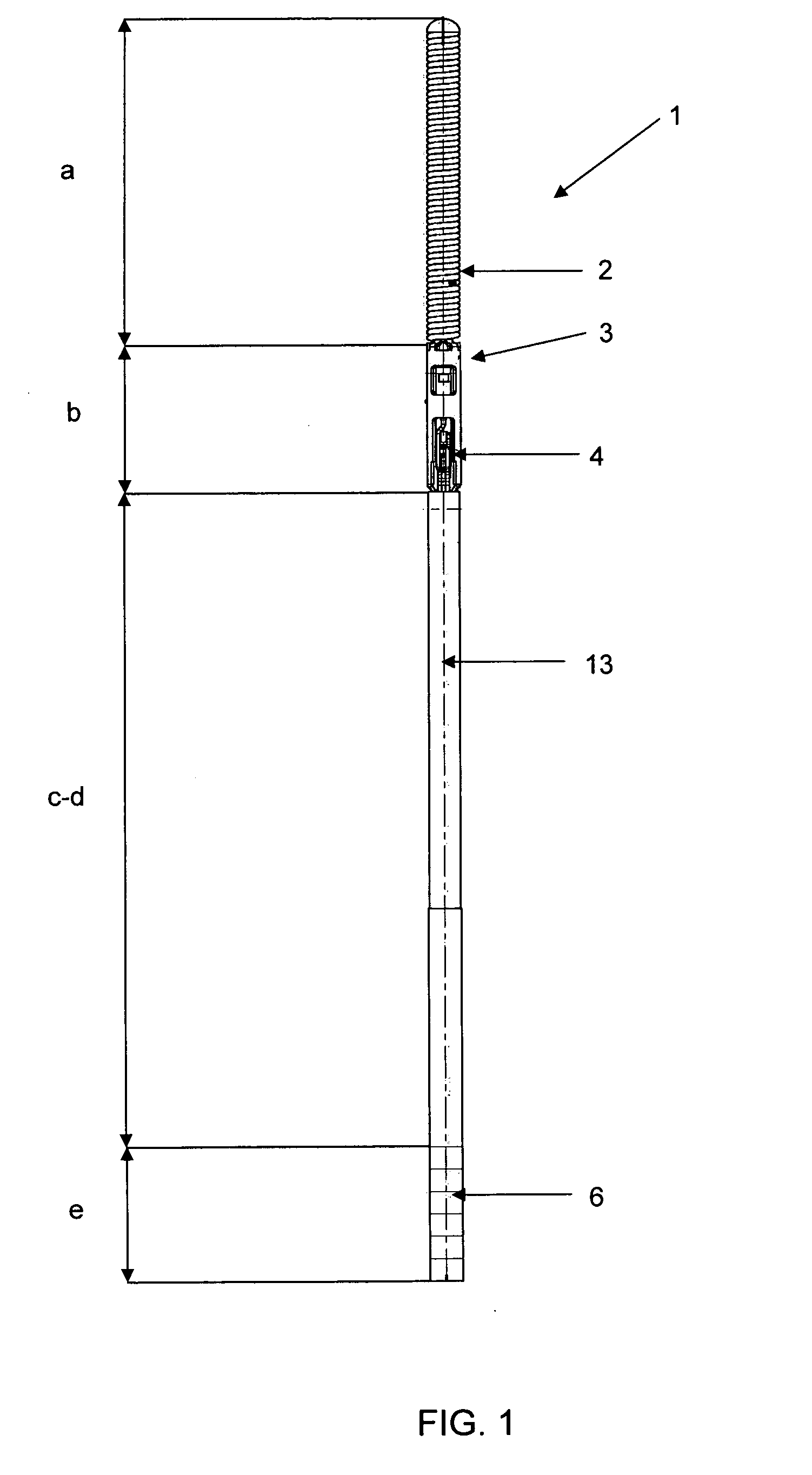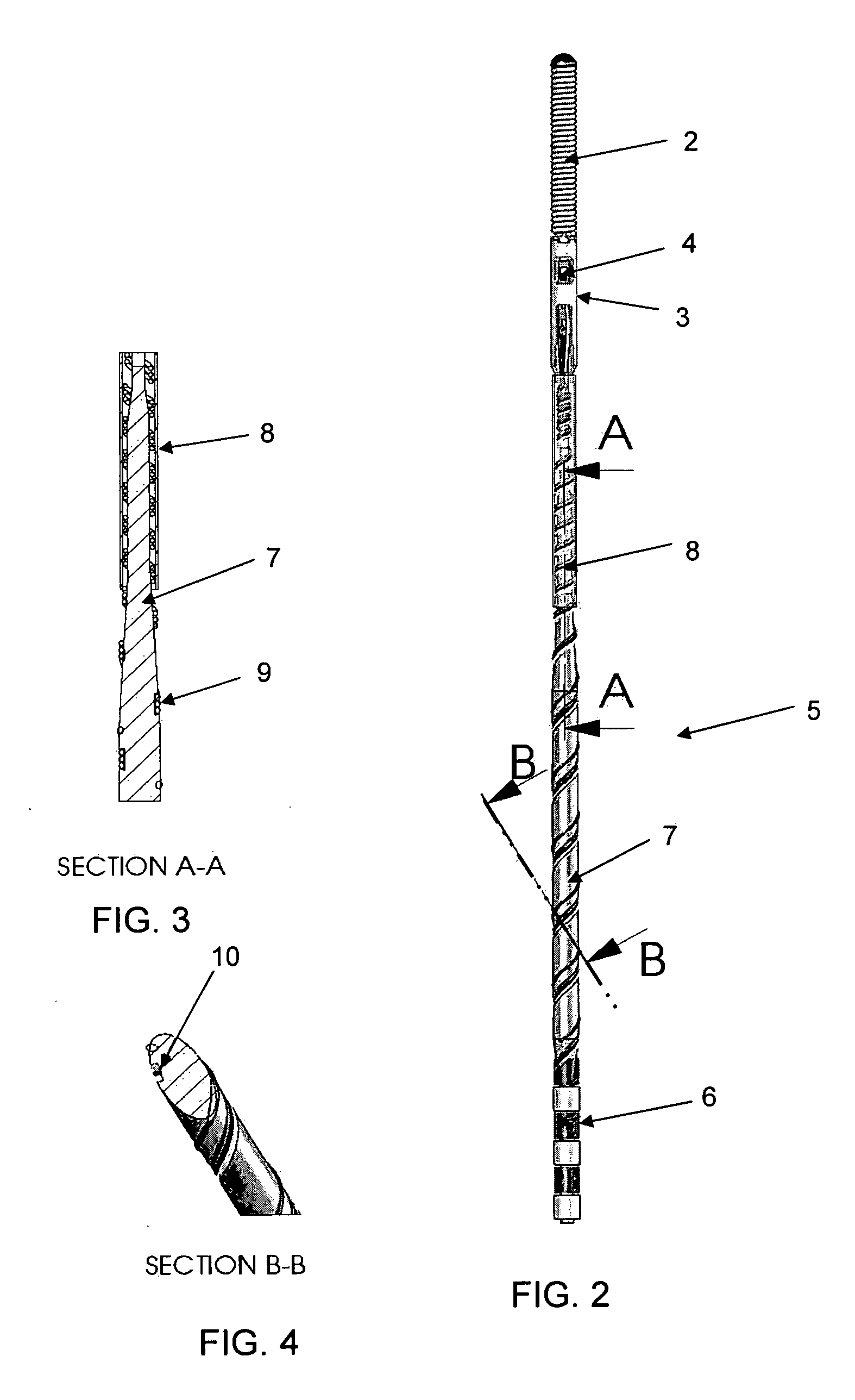Sensor guide wire with micro-cable winding
a technology of micro-cables and sensors, applied in the direction of guide wires, micro-scale sensors, medical science, etc., can solve the problems of rotational whipping, difficulty in pushing the sensor guide forward into the vessel,
- Summary
- Abstract
- Description
- Claims
- Application Information
AI Technical Summary
Benefits of technology
Problems solved by technology
Method used
Image
Examples
Embodiment Construction
[0024]With reference to FIG. 1, a sensor guide wire 1 e.g. as exemplified by the above-mentioned EP-1 475 036 is shown. The guide wire 1 has been divided in different regions, a-e, where region a is the most distal region and e is the most proximal region. The different regions are: a) Tip region, b) Sensor region, c) Flexible region, d) Shaft region, and e) Male connector region. In an exemplary embodiment, region a) is about 10-50 mm, region b) is about 1-5 mm, region c) is about 150-400 mm, region d) is about 1000-2000 mm and region e) is about 10-100 mm. The diameter of the sensor guide wire 1 preferably varies between 0.25-2.5 mm; for use in coronary arteries, the diameter is normally 0.35 mm.
[0025]The tip region includes a radioopaque tip 2, in this embodiment in the shape of a coil. The tip region bridges to the sensor region, which includes a sensor element 4 accommodated in a jacket 3. In order to power the sensor element 4 and to communicate signals representing the measur...
PUM
 Login to View More
Login to View More Abstract
Description
Claims
Application Information
 Login to View More
Login to View More - R&D
- Intellectual Property
- Life Sciences
- Materials
- Tech Scout
- Unparalleled Data Quality
- Higher Quality Content
- 60% Fewer Hallucinations
Browse by: Latest US Patents, China's latest patents, Technical Efficacy Thesaurus, Application Domain, Technology Topic, Popular Technical Reports.
© 2025 PatSnap. All rights reserved.Legal|Privacy policy|Modern Slavery Act Transparency Statement|Sitemap|About US| Contact US: help@patsnap.com



